Spring and summer bring many wonderful occurrences- nice weather, Easter egg hunts, and baby animals! From middle to late March into August and even occasionally September, our local wildlife will be carrying out their biological instinct and a lot of new babies will be making their way into the ecosystem. While they may look cute and cuddly, these are still wild animals and need to be treated with as much respect and caution as any other wild animal.
Due to the our area’s growing population, native wildlife may be closer to humans than they would typically like to be. Most species of wildlife will avoid people as they like to keep to themselves, but interactions can occur. Here are some tips and tools if you happen to come across injured or abandoned wildlife this spring.
Reptiles
Gators
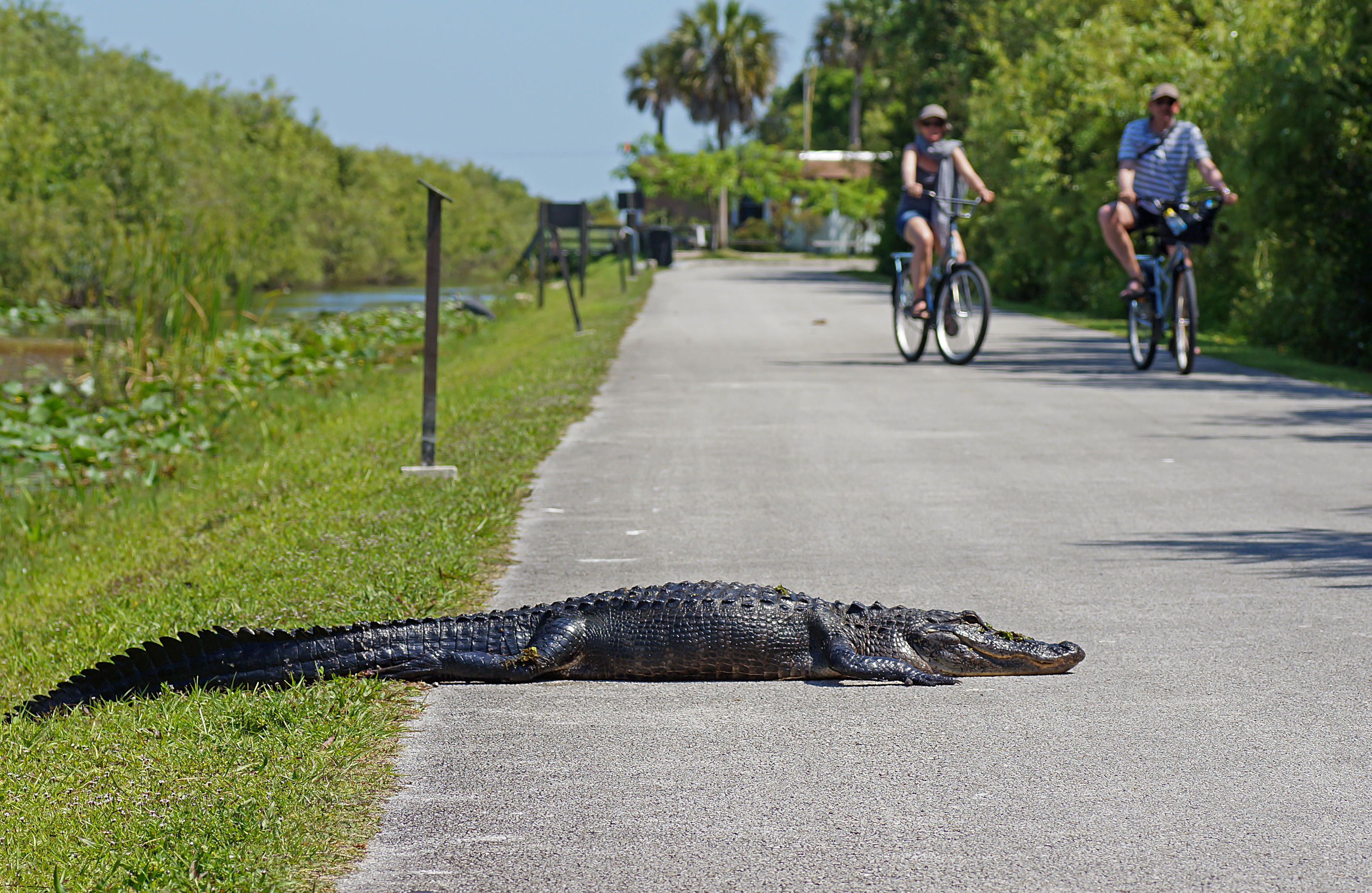
Living in Florida, alligators are a common site. These massive and prehistoric predators are one of the most resilient and thriving animals in the Florida ecosystem. Florida is actually one of the only places in the entire world that alligators and crocodiles call home.
Mother alligators and crocodiles may seem scary and scaly on the outside, but shockingly enough, they have fantastic maternal instincts. The mothers will build a nest with sticks, mud, swamp plants, and various items found in the ecosystem. The mother will bury her 10-50 eggs under these materials and begin to regulate the temperature so that both sexes are produced in her clutch.
As the young begin to mature, they will start to vocalize while still being inside the egg. Once they begin to hatch, the mothers will then hold their young in their mouth and take them into the water. This is where they typically will spend the first 1 to 2 years of their lives by their mother’s side. Whenever the young feel threatened, they will vocalize to call their mother for help.
What do you do if you see an alligator or crocodile nest? The best thing you can do is just stay away. Do not interfere with the nest or any young you may see near the nest. Mothers do not stray too far from home, so even if you cannot see her, that doesn’t mean she isn’t close by. Although alligator and crocodile mothers are very observant, some young get abandoned from time to time. These small juveniles and can be seen as prey by bobcats, larger birds, and sometimes even domesticated dogs. If you find an injured young alligator, do not try to handle it. You should reach out to a local wildlife rescue organization or even animal control if needed.
Turtles, Tortoises and Terrapins
Florida is also home to various types of turtles. Most of the land-oriented turtles will create nests in almost the same manner of alligators or crocodiles. The mother turtles will find a warm spot of land, create a burrow, and lay her eggs there. Unlike the alligators, after the eggs are laid, the mother turtle then leaves. Since the nest is not under constant protection from the mother, it is common for the eggs or hatchlings to fall prey to the elements and other predators like snakes, foxes, birds, and scavenger wildlife. Domestic dogs can also cause damage to the burrow or young just from curiosity. If you see a burrow, do your best to keep your distance and give these fragile young the privacy they need.
It is also important to note that gopher tortoises are considered a Keystone species. Their burrows provide homes not just to their own young, but to other animals such as snakes. Since gopher tortoises are so vital to the ecosystem, it is illegal to tamper with them or their burrows. Because both turtles and snakes make themselves at home in these burrows, it may also be unsafe to look or reach into the holes.
Partial land and water turtles, like red eared sliders, create more inconspicuous nesting grounds. Therefore, it is unlikely to find one unless you are in a heavily populated turtle area. If you find an injured turtle please contact a wildlife rehabilitator, Florida fish and wildlife conservation, or even Clearwater marine aquarium.
Sea Turtles
In addition to land turtles, Florida is home to several types of sea turtles. These creatures make their way onto land every spring/summer to lay eggs. A female sea turtle will nest between 2-7 times per season depending on the species. If you happen to find a nest on the beach please notify any beach personnel or contact the Florida Fish and Wildlife conservation. The proper authorities will mark the nests appropriately, to keep these fragile eggs protected.
Once the young have hatched they use various environmental and instinctual clues to guide their way to the ocean. For this reason, it is also recommended to limit light pollution on or near the beach. Keep lights in homes and hotels turned off or windows closed in the evenings. If you walk on the beach, try not to carry artificial lighting with you during laying or hatching seasons.
 Snakes
Snakes
Finally, we need to address snakes. Though most are not venomous, there are a select few deadly snakes that live in this region. These venomous snakes are water moccasins, several species of rattle snakes and the elusive coral snake. Female snakes are like alligators in the way that they protect their young. Cottonmouths, or water moccasins, are one of the types of venomous snakes that occupies the wetlands of Florida. Many of the recorded bites from these snakes come from females, close or surrounding their nesting areas.
While mother snakes are protective, they do leave their nests for portions of the day and evening. These absences are necessary so the mother snakes can hunt and sustain themselves. Many of the nests will be in soft ground to incubate the eggs and regulate the temperature of the clutch. The water snakes will likely have nests in shallow water or even near river banks and on the edge of lakes. For this reason, is important to take caution with swimming or other lake-side activities.
Snakes are very independent animals. Snakes often do not stay in the same location; they are constantly looking for new sources of food. Even though it is rare to find a truly abandoned snake, some may be left due to injuries. If you find an injured snake, please do not handle it. Many of the venomous snakes can look very similar to some of the non-threatening species of snakes. Please contact Florida fish and wildlife conservation if you find an injured wild snake.
Mammals and Marsupials
Skunks, squirrels, bunnies, oh my! Florida has one of the most biodiverse ecosystems in the continental US, which brings many different types of critters. Most mammals tend to be good mothers and tend to their young pretty frequently so it is a cause for concern if you spot a wild mammal without a mother close by. Unfortunately, one of the most common causes for orphaned wildlife is that the mother was trapped, killed, or injured. Please do not attempt to handle these animals without contacting a wildlife authority first. Despite how adorable they seem, these young are most likely scared and will react in that way.
If you notice that the young animal appears to be injured and will allow you to safely handle it, it is vital to provide warmth. If you do not have a warming source, it is easy to make a warmer with a long tube sock and rice. Simply place the rice inside the sock, tie it off, microwave for one to two minutes, and place under the baby. Place a blanket in between the baby and the warmer to reduce the risk of burns. One of the few time mothers will abandon their babies is if the babies are ill, or they have too many babies to care for.
Rabbits
Rabbits are unique in that they actually will leave their young for extended periods of time throughout the day. If you find juvenile rabbits the best thing you can do is leave it where it is. If you have found it in an unsafe area, you can attempt to find the nest and return them to it if they have ventured out. Unfortunately many young rabbits become incredibly stressed and can even die in the hands of humans. Only the most experienced wildlife rehabbers should provide care, for young, injured bunnies. If the young rabbit appears to be injured or ill, you can contact a local wildlife rescue and find out how to get them into the right hands.
Squirrels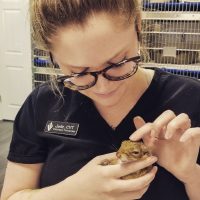
Squirrels will also drop their young if they are injured or ill. Unfortunately, squirrels tend to nest in trees and will push their babies out of the tree if they feel it is threatening the life of the other babies. Some babies can also become a little adventurous at too young of an age and will fall from their nest. It is very common to find very young baby squirrels on the ground.
Abandoned baby squirrels require more attention than other wildlife at a young age, and often times have to be syringe fed. It is important that an experienced person does this, as squirrels can actually aspirate on their formula. Aspirating means that the formula is getting into their lungs rather than their stomach, which can become a life threatening situation very fast. Extremely young squirrels may even have to be fed with a special type of tube. Please reach out to a local rescue group if you find an orphaned squirrel.
Skunks
Though they are not seen very often, skunks do live in Florida. Skunks tend to be very independent animals and do not scavenge in heavily populated areas like raccoons or opossums. Skunks keep their young with them almost at all times as they move around frequently. Although it is rare to come across an orphaned skunk please take caution. Skunks are very easily frightened and will release a foul odor when startled. Please treat this animal as you would any other orphaned wildlife, find a local wildlife rescue or contact Florida fish and wildlife conservation.
Opossums
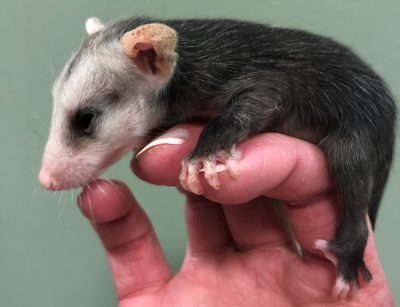 The only marsupial in the United States inhabits Florida. Opossums are often mistaken for mammals when in fact they are marsupials. Female opossums have a large pouch on their abdomen where they store their young. Opossum babies actually grow inside the pouch longer than they do inside the womb!
The only marsupial in the United States inhabits Florida. Opossums are often mistaken for mammals when in fact they are marsupials. Female opossums have a large pouch on their abdomen where they store their young. Opossum babies actually grow inside the pouch longer than they do inside the womb!
Opossums are often victims of cars, as they have very poor eyesight. Since the babies spend most of their time in the pouch, it is common that while the mother may be dead- the babies can still survive in the pouch after the mother gets hit. This is not a safe situation for the babies. As they drink the milk they are being exposed to new and different types of bacteria which can be fatal to them. If you see a hit opossum on the side of the road, and you can safely reach it, you can check if they have a pouch filled with young.
If you find orphaned or abandoned babies it is vital to find a wildlife rescue to get them to as they have to be fed and kept at a certain temperature at all times. Young opossums require a strict diet as they are prone to contracting metabolic bone disease (or MBD). This is a painful, debilitating, degenerative disease that can be fatal. Baby opossums also require a special form of tube feeding in order to take in their nutrition. Young opossums are prone to bloating as well, which is a build up of gas in the stomach. If left untreated can be life threatening. Even though they are very cute, they require a great deal of maintenance and correct care in order for them to be released back into the wild.
Birds
 Living close to many bodies of water and high trees make for a great environment for several different species of birds. Ranging from birds of prey like hawks to scavenger birds like seagulls, Florida is home to countless types of birds. Many times young birds will fall from the nest and injure themselves, get caught by other animals, or found sick and rejected from the nest. This can happen to any bird and can be a life threatening situation for them. Infection, broken bones, wounds, or even parasites can claim a young birds life.
Living close to many bodies of water and high trees make for a great environment for several different species of birds. Ranging from birds of prey like hawks to scavenger birds like seagulls, Florida is home to countless types of birds. Many times young birds will fall from the nest and injure themselves, get caught by other animals, or found sick and rejected from the nest. This can happen to any bird and can be a life threatening situation for them. Infection, broken bones, wounds, or even parasites can claim a young birds life.
When trying to catch a young or injured bird, do so with caution as they will likely try to evade and may end up injuring themselves further. Some birds can also cause harm to the rescuer if they are not a trained professional and know how to handle birds. Many species of birds can cause deep wounds with their talons and even their beaks, it is imperative to find a skilled wildlife rehabber that knows how to handle birds in a safe and cautious matter.
Conclusions
With any and all wildlife, treat them with respect and do not handle them unless you have to transport them to receive medical attention. Please do not try to care for injured or orphaned wildlife if you do not have any experience. Though they may be juvenile, they are still wild animals and should be handled with caution.
If you aren’t sure who to contact in a wildlife emergency, below are some links to local wildlife organizations.
Owls Nest Sanctuary For Wildlife– (813) 598-5926
Seabird Sanctuary- (727) 391-6211
https://www.nwrawildlife.org/page/Find_A_Rehabilitator
www.wildliferehabber.com has an online listing of rehabilitation contacts by country and state.
Florida Fish & Wildlife Tampa Office- (863) 648-3200


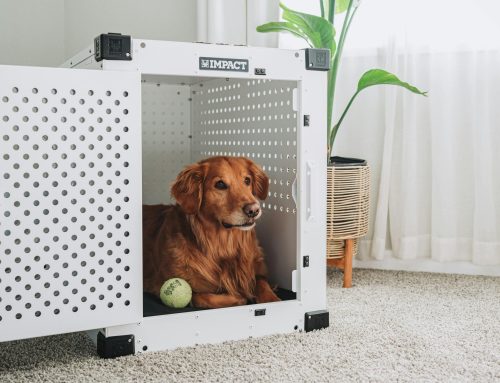
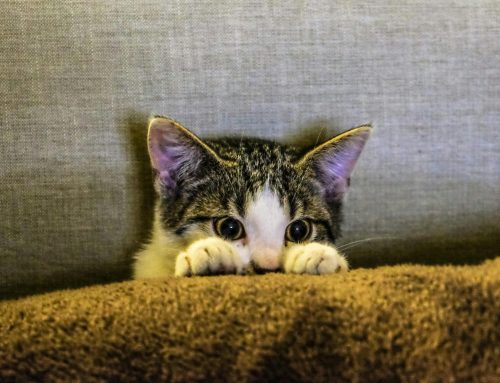
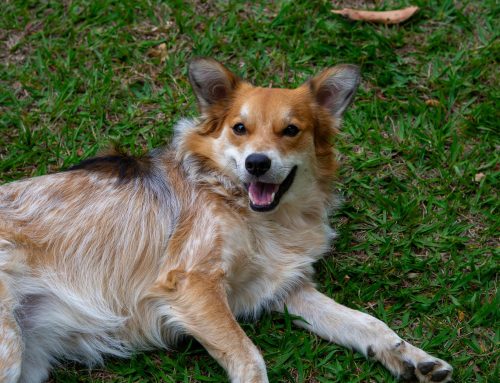
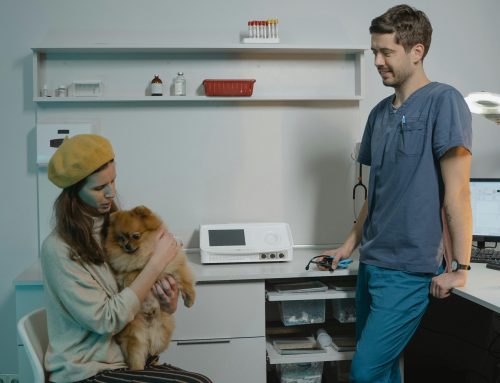
Leave A Comment